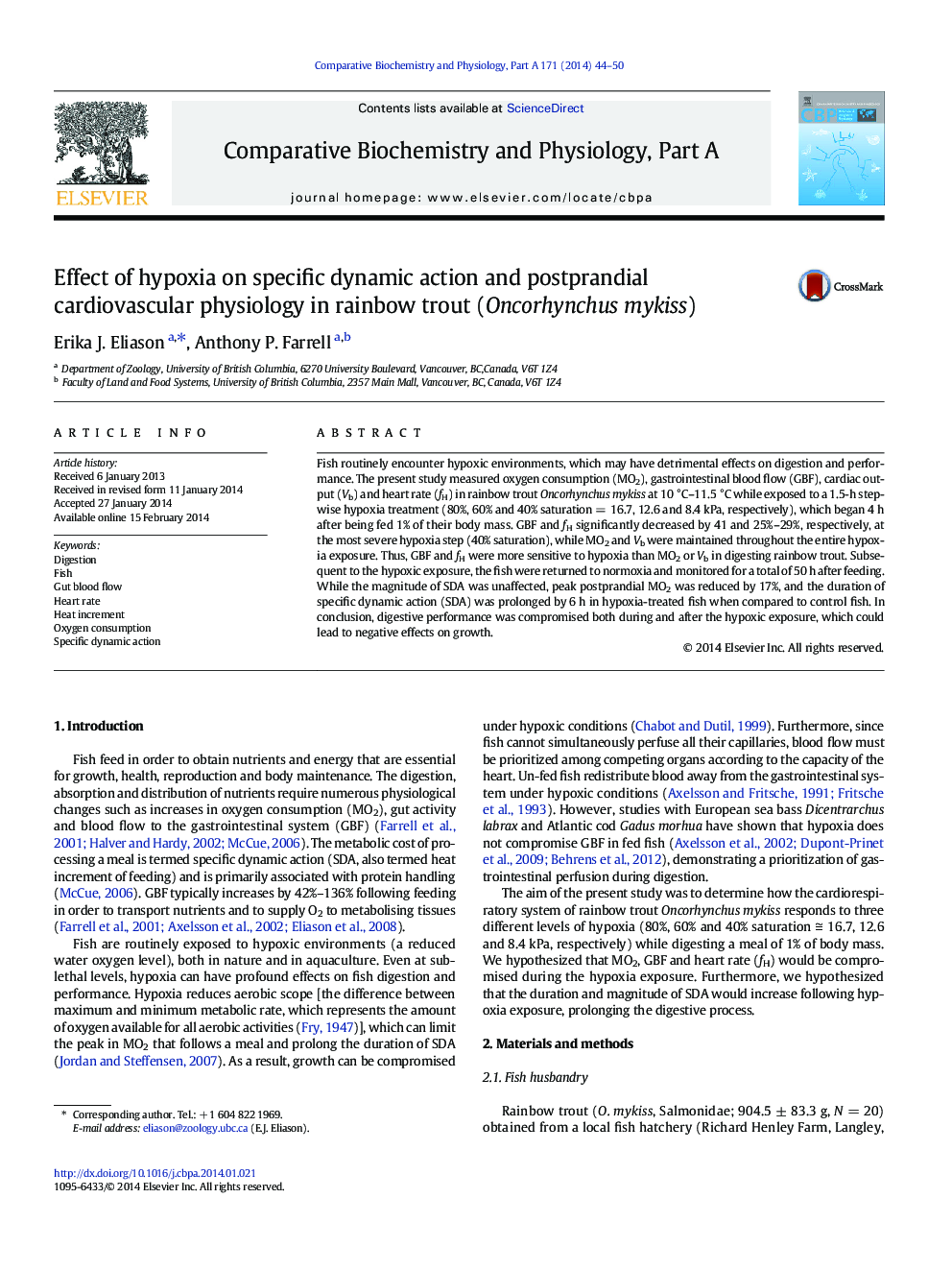| Article ID | Journal | Published Year | Pages | File Type |
|---|---|---|---|---|
| 1972196 | Comparative Biochemistry and Physiology Part A: Molecular & Integrative Physiology | 2014 | 7 Pages |
Fish routinely encounter hypoxic environments, which may have detrimental effects on digestion and performance. The present study measured oxygen consumption (MO2), gastrointestinal blood flow (GBF), cardiac output (Vb) and heart rate (fH) in rainbow trout Oncorhynchus mykiss at 10 °C–11.5 °C while exposed to a 1.5-h step-wise hypoxia treatment (80%, 60% and 40% saturation = 16.7, 12.6 and 8.4 kPa, respectively), which began 4 h after being fed 1% of their body mass. GBF and fH significantly decreased by 41 and 25%–29%, respectively, at the most severe hypoxia step (40% saturation), while MO2 and Vb were maintained throughout the entire hypoxia exposure. Thus, GBF and fH were more sensitive to hypoxia than MO2 or Vb in digesting rainbow trout. Subsequent to the hypoxic exposure, the fish were returned to normoxia and monitored for a total of 50 h after feeding. While the magnitude of SDA was unaffected, peak postprandial MO2 was reduced by 17%, and the duration of specific dynamic action (SDA) was prolonged by 6 h in hypoxia-treated fish when compared to control fish. In conclusion, digestive performance was compromised both during and after the hypoxic exposure, which could lead to negative effects on growth.
